Top 10 Most Beautiful Love Paintings
- 1. The Jewish Bride by Rembrandt (c1666)
- 2. The Honeysuckle Bower by Rubens (c1609)
- 3. The Surprise by Watteau (c1718)
- 4. Dance in the Country by Renoir (1883)
- 5. Klimt The Kiss by Gustav Klim (1908)
- 6. The Birthday by Chagall (1915)
- 7. The Lovers by Magritte (1928)
- 8. Self-Portrait as a Tehuana by Frida Kahlo (1943)
- 9. The Resurrection by Stanley Spencer (1945)
- 10 .Love Robert Indiana (1965)
Cast your loving ones on the most tender and darkest depictions of romance on canvas in honor of Valentine's Day
1. The Jewish Bride by Rembrandt (c1666)
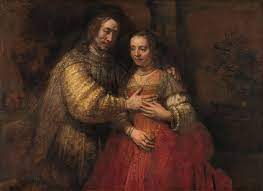
The Jewish Bride By Rembrandt (C1666)
This is a visual representation of those wonderful Corinthians verses often used at weddings. Rembrandt's masterpiece reflects love in every brushstroke. We know little about his loving pair. Was she a Jewish bride? Were they Jewish?
However, the image is beyond portraiture. Their faces are glowing with love. Both gestures are lovely. Her hand tenderly covered her breast while his hand gently rested on it. On that day, they were themselves but universal. The painting is an inspirational piece, a secular altarpiece that inspires calmness, humility, and love.
2. The Honeysuckle Bower by Rubens (c1609)
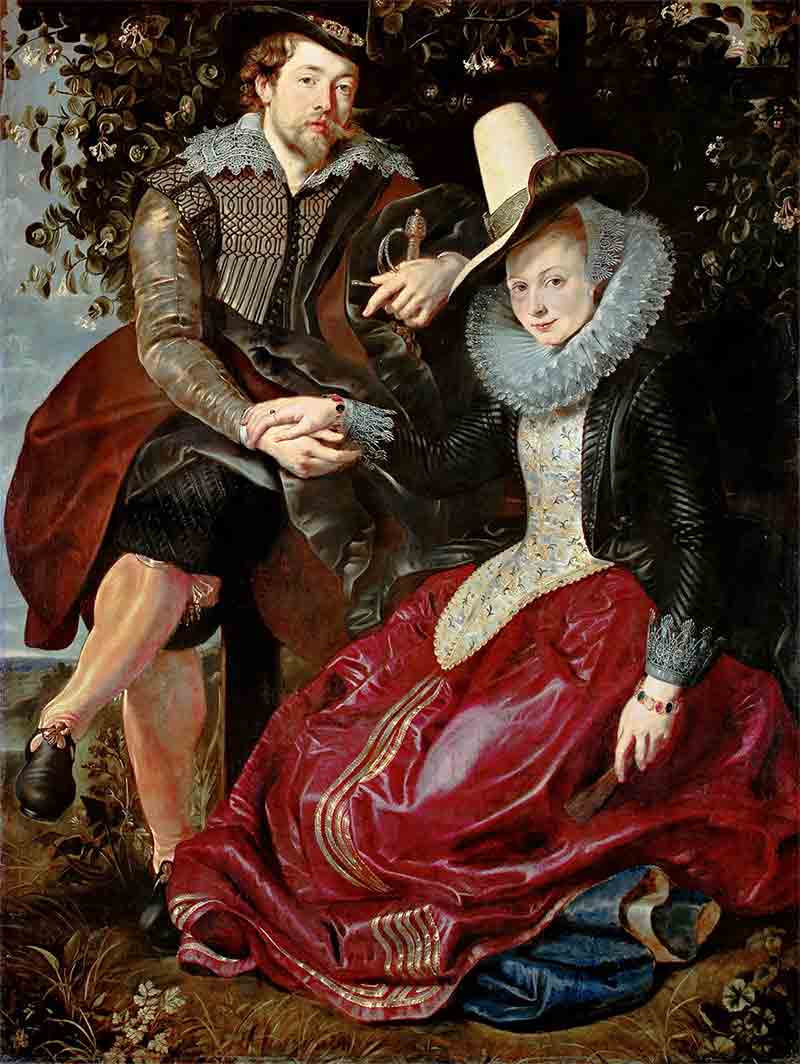
The Honeysuckle Bower By Rubens (C1609)
Rubens and his young wife, Isabella Brant, are sitting hand-in-hand in the honeysuckle blooms, just back from their honeymoon. He leans back with his legs crossed, relaxed and smiling. She is wearing her sweetest smile.
The garden is flourishing, and the two are confident in their love. The two were a perfect match (Rubens was a gifted author who left eloquent notes praising Isabella’s calm, good humor).
This marriage portrait is a conversational, fluid, and sensual alternative to the rigidly formal 17th-century marriage portraits often used as a historical record. In every way, the lovers are pointing in the same direction.
3. The Surprise by Watteau (c1718)
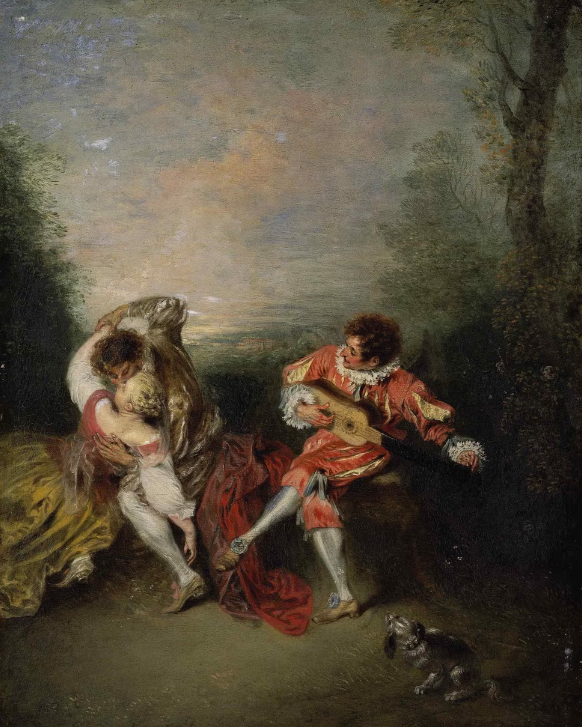
The Surprise By Watteau (1718)
A musician is strumming just inches from a young couple in a passionate embrace as the sun begins to fade. They are so absorbed in the diagonal embrace. It’s unclear. Whose limbs can be seen in the shuddering red and white satin of this embrace?
They barely seem aware of the uncomfortably near spectator. Maybe music is their source of love, or perhaps they're so infatuated with each other that they can't hear the spectator at all. The musician shows what he might lack. Watteau uses him as a semi-tragic observer.
4. Dance in the Country by Renoir (1883)

Dance In The Country By Renoir (1883)
Renoir's lovers get swept up by the music, dance, and heat of summer - as well as by each other. The al fresco dinner has been left in a mess; a hat is (his?) A hat (his?) has fallen to the ground.
She is barely able to hold on to her fan while he grabs her wrists and waist. The entire painting appears to be swaying. The smile on her beautiful face is the crowning glory of this soft, sultry composition with hints of feather beds. Directly facing the viewer, she is clearly happy.
5. Klimt The Kiss by Gustav Klim (1908)
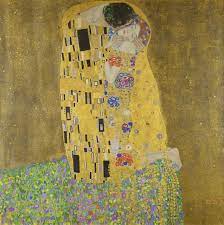
The Kiss By Gustav Klim (1908)
The lovers are wrapped up in one another in an everlasting kiss. The lovers' love is so out of this earth (the only place they can be found is in this ethereal, jewel-bright meadow) that it is even celestial. Their heads are covered with gold leaf. The only thing that gives a sense of her body is the elegant toes.
Klimt’s painting is a masterpiece, and no wonder hippies love it. It's the most famous kiss ever painted. It is often said that young lovers feel like they are a perfect match, just as a square canvas and a couple fit perfectly together. They kiss while the world around them shimmers.
6. The Birthday by Chagall (1915)

The Birthday By Chagall (1915)
They are lifted by love so that their feet barely touch the ground. He kisses her, bending backward as if he were an angel or a comet. Chagall's beloved muse, Bella, will be marrying Chagall soon, and the strength of their relationship begins.
This vision combines sensual, wild love with transcendent adoration. Wow. The shawl-draped room seems like a shrine. Chagall wrote about his future wife, "I only had to open my windows and blue air, and love entered with her."
7. The Lovers by Magritte (1928)
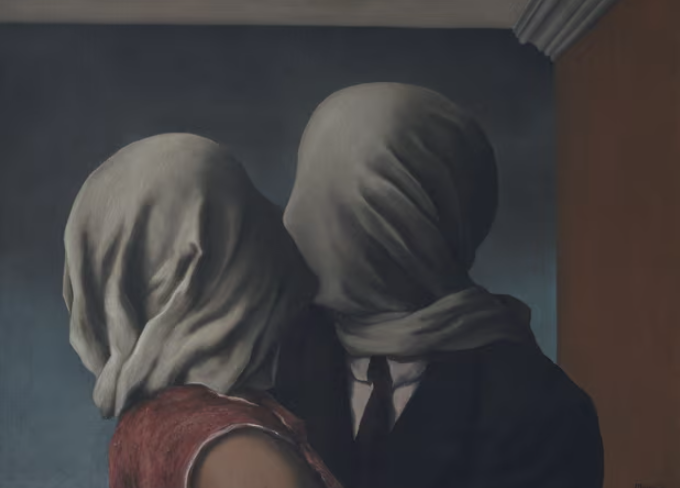
"The Lovers" By Magritte (1928)
Blind date? Two lovers try to kiss each other through separate grey hoods. Their lips never meet, and the fabric is dry, suffocating the tongue. It's a masterpiece in sexual frustration. They can't see each other, feel each other, or even kiss each other.
The cornice over their heads suggests a bourgeois prison of a couple bound together by convention but blocked by one another. Maybe they don't even know each other. This is the nightmare of an isolated relationship. These hoods can be used as shrouds.
8. Self-Portrait as a Tehuana by Frida Kahlo (1943)
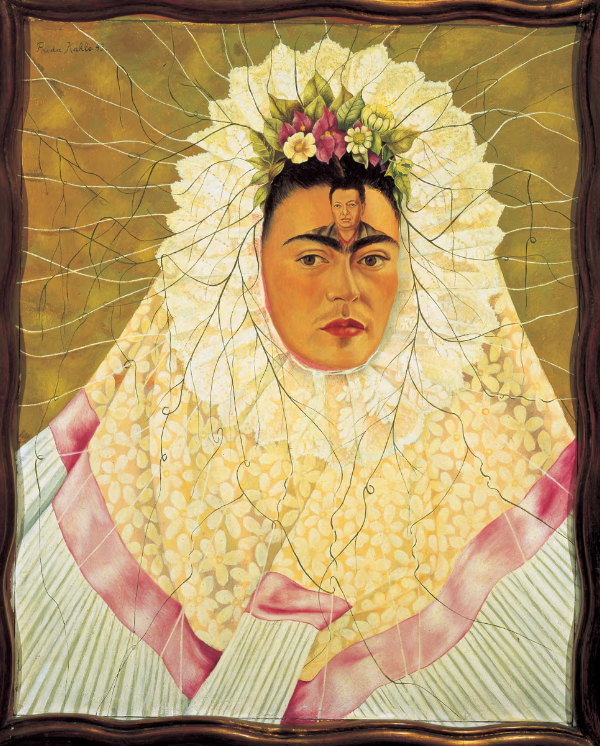
Self-portrait As A Tehuana By Frida Kahlo (1943)
The double portrait was created at the end of the summer of 1940 when Frida and Diego Rivera separated. Kahlo, as she often does, makes metaphors literal. Diego is always on her mind. He's tattooed in her brain and locked in her head despite the pain of his affairs. She can't help but think about him.
She is dressed in the traditional Mexican costume with a crown made of leaves, which spreads out like a web. It's as if Kahlo were trapped by the picture and her obsession. It was not the end. They had remarried by the time the film was completed in 1943.
9. The Resurrection by Stanley Spencer (1945)
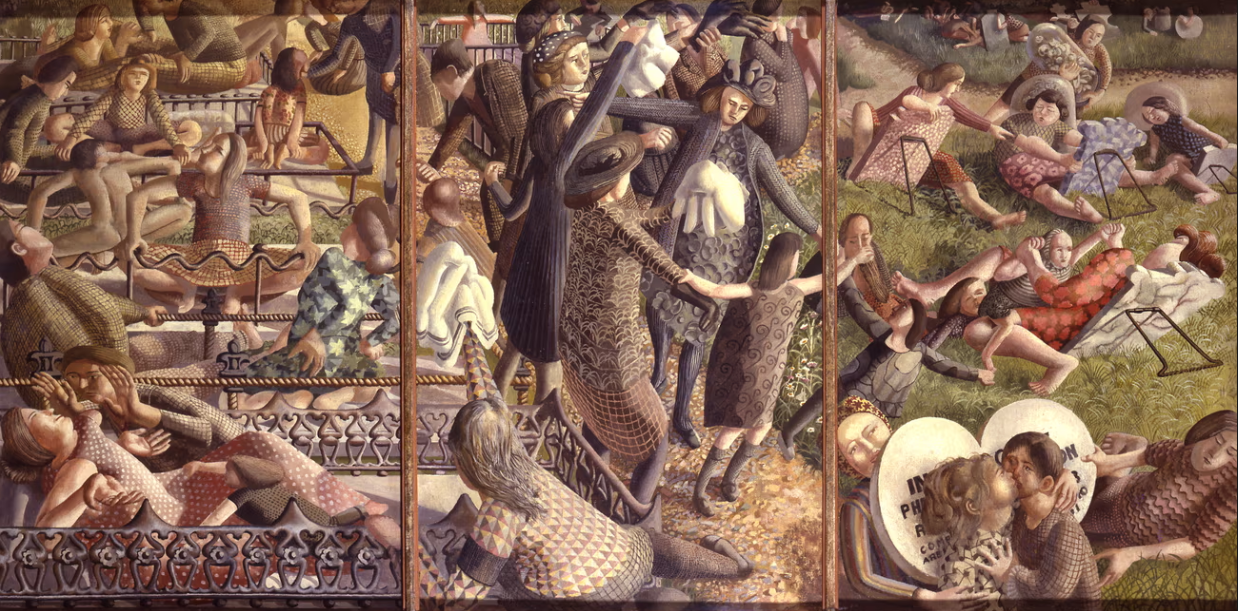
The Resurrection By Stanley Spencer (1945)
What happens when this world is over? Larkin said that all we have left is love. But in Stanley Spencer's wonderful and warm perception of the Resurrection, based on Port Glasgow Cemetery, love is more than a poetic idea. It is a full-body embrace.
In the foreground are two lovers who embrace against a giant Love Heart candy with a suitable inscribed message. A kiss brings them back to life. We will meet again, and our love won't die. Who knows, it might be the hope of all…
10 .Love Robert Indiana (1965)
Love Robert Indiana (1965)
The word is love. The picture is much more than just a word. This lovely round O is carried by a bracing E and stands beside an upright L. It leans, and its head is turned. It flirts. Love has knocked it sideways.
Robert Indiana, an American pop artist, created this incredibly famous painting in which the letters of love are set against a landscape of blue and green. This image, sold in the millions, is a valentine of our time. What else is more important than love?

No Comments Yet...